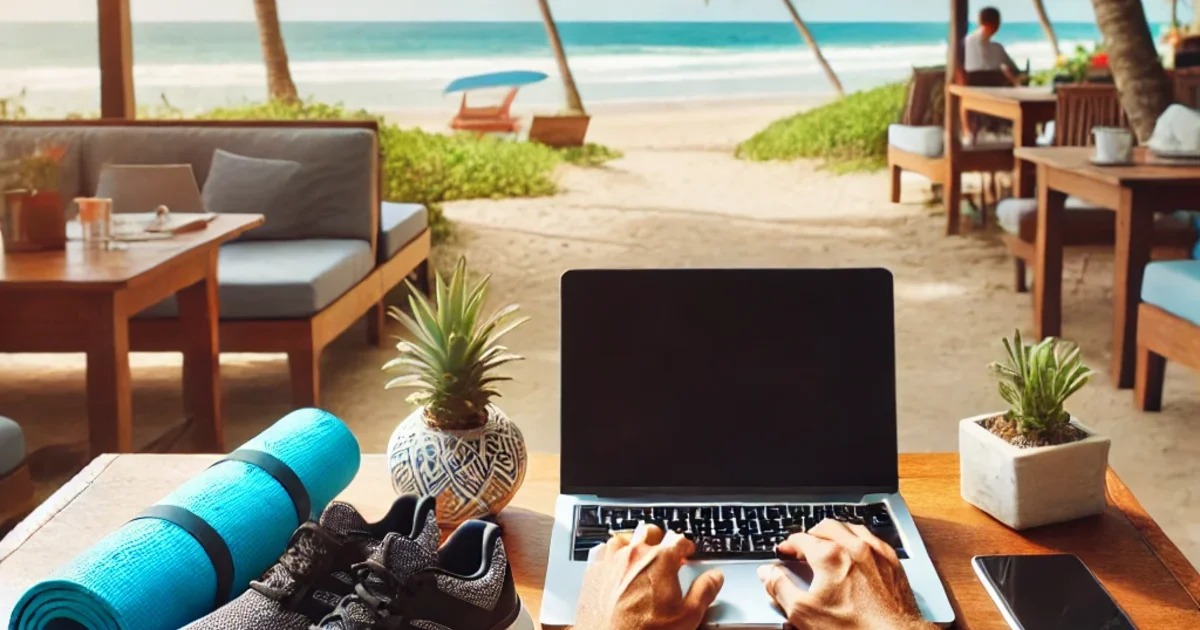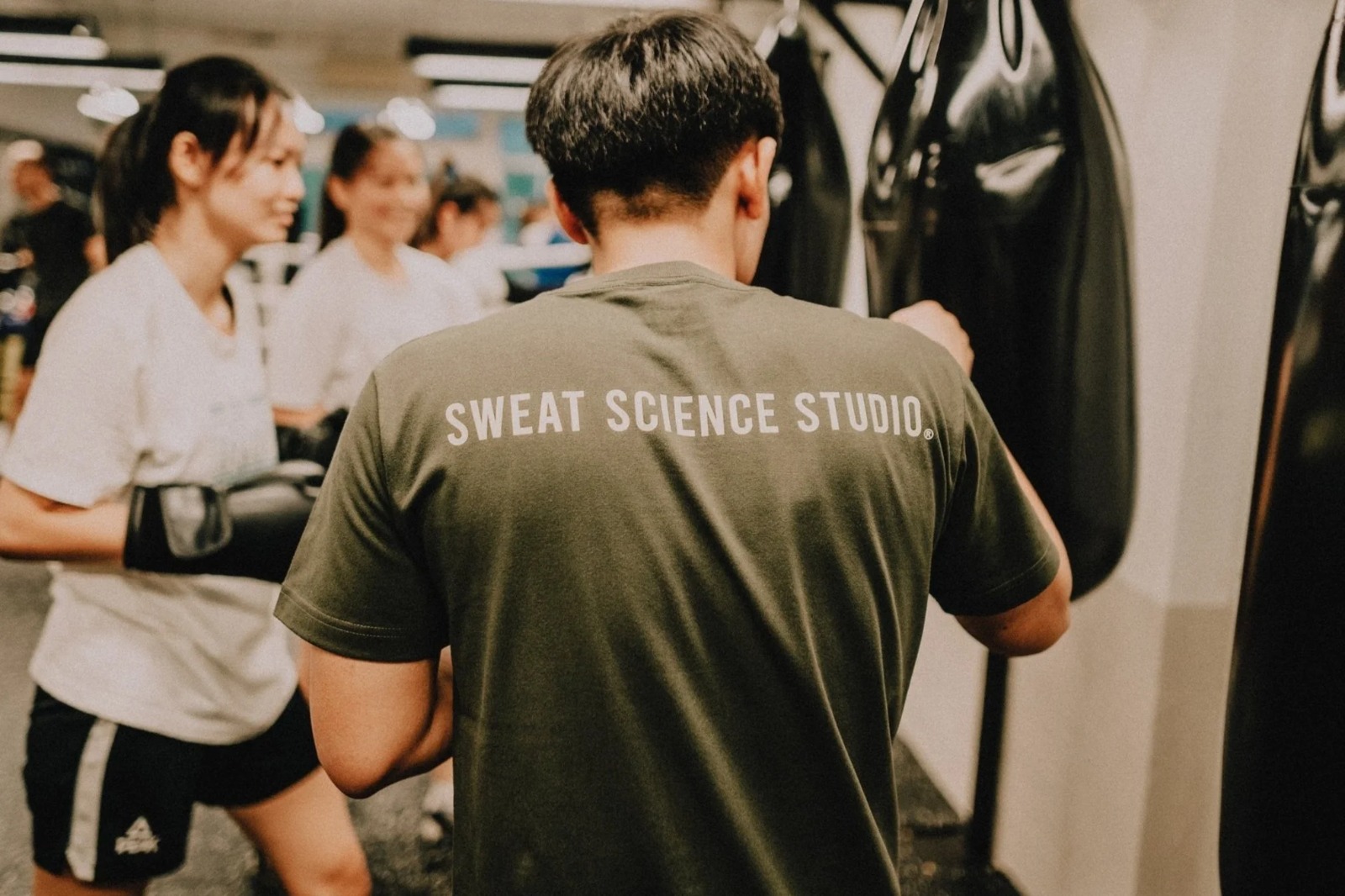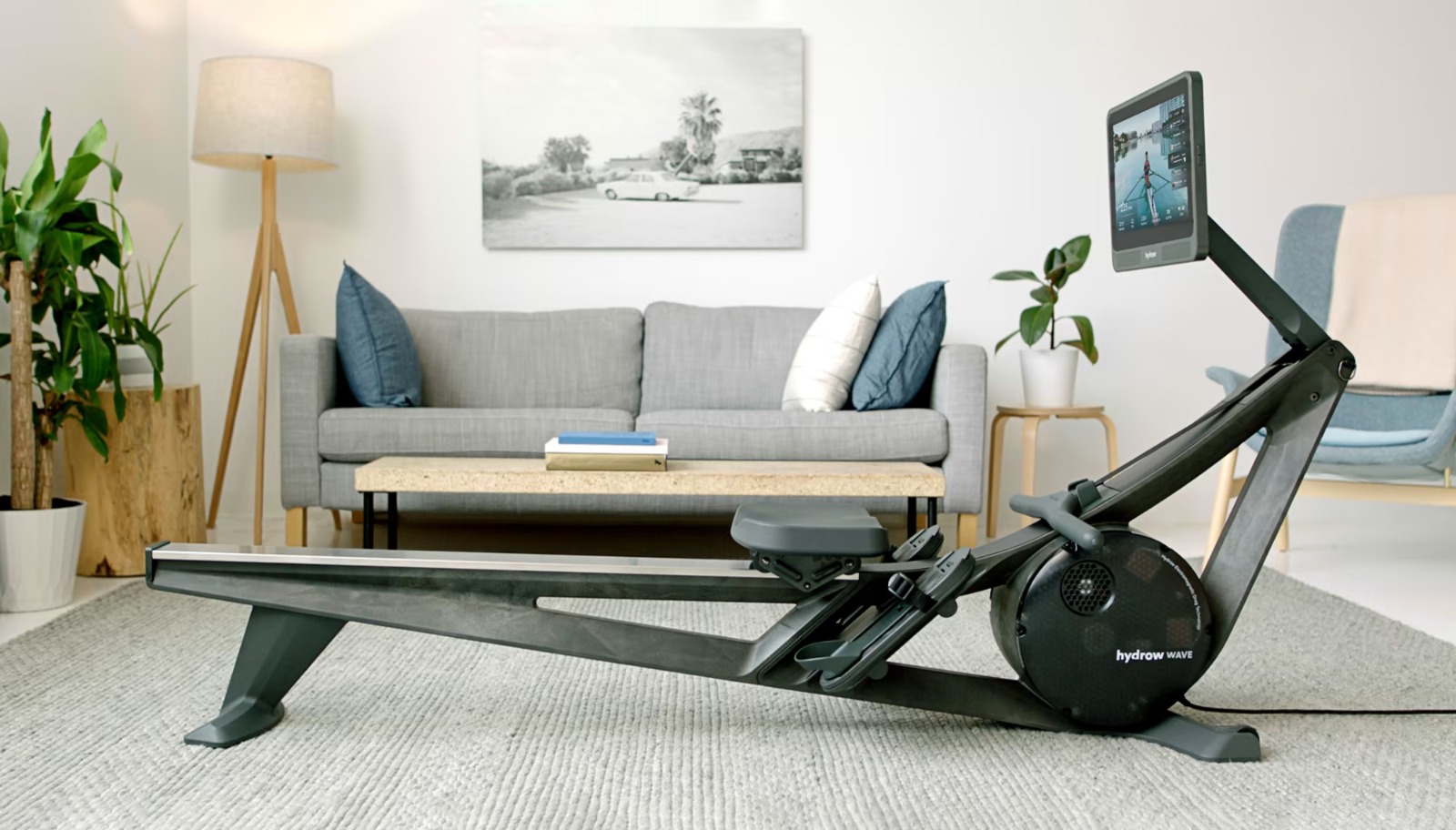
Fitness for Digital Nomads Living on the Road.
Staying fit while living as a digital nomad requires creativity, discipline, and adaptability, as constant travel, irregular schedules, and limited access to gyms can disrupt health routines. By combining portable workouts, mindful nutrition, active exploration, and mental wellness practices, remote workers can maintain strength, energy, and balance, ensuring their body and mind remain resilient, healthy, and energized no matter where their journey takes them.
💪 Fitness Guru
54 min read · 6, Oct 2025

Introduction
The digital nomad revolution has redefined how we work and live. The ability to earn a living remotely while exploring the world appeals to millions, offering flexibility and adventure. Yet, one critical aspect often takes a backseat amid travel plans, deadlines, and new experiences — fitness. Staying healthy on the move requires adaptability, discipline, and creativity. Unlike stationary professionals, digital nomads face unpredictable environments, limited equipment, and irregular routines. However, with mindful planning and a bit of innovation, it’s entirely possible to maintain — even improve — fitness while living a nomadic life.
1. Understanding the Nomadic Lifestyle and Its Fitness Challenges
The digital nomad lifestyle sounds glamorous: working from a beach café in Bali or a cozy hostel in Prague. But frequent travel, inconsistent food options, time zone shifts, and long work hours can disrupt even the best fitness intentions.
Some common challenges include:
- Lack of Routine: Travel days, client calls, and shifting schedules make consistent workouts tough.
- Limited Equipment: Many nomads rely on small backpacks — no room for dumbbells or yoga mats.
- Inconsistent Diet: Street food, airport snacks, and limited kitchen access lead to unhealthy choices.
- Sedentary Work: Hours of laptop time can cause stiffness, back pain, and poor posture.
- Motivational Dips: Without a familiar gym or community, it’s easy to lose drive.
Acknowledging these hurdles is the first step. The second is designing a sustainable fitness strategy that aligns with the nomad’s mobile reality.
2. Building a Portable Fitness Routine
One of the biggest misconceptions about staying fit is that it requires a gym. The truth? Bodyweight training, mobility exercises, and resistance bands are enough to keep you in shape anywhere.
Bodyweight Workouts for Any Location:
- Push-Ups: Target chest, shoulders, and triceps.
- Squats: Strengthen legs and glutes.
- Planks: Core and posture support.
- Lunges: Balance and lower body endurance.
- Burpees: Full-body cardio booster.
Travel-Friendly Equipment:
Invest in compact tools like:
- Resistance bands: Add tension for strength training.
- Jump rope: Great for cardio and coordination.
- Yoga mat: Doubles for stretching and meditation.
- Door anchor or suspension trainer (e.g., TRX): Turns any doorway or tree branch into a workout zone.
Sample Nomad-Friendly Routine (30 Minutes):
- 5 min warm-up (jumping jacks, arm swings)
- 3 rounds of:
- 15 squats
- 10 push-ups
- 20 walking lunges
- 30-sec plank
- 1-min jump rope
- 5 min cooldown (stretching)
This full-body workout requires zero gym access and can be performed in a hostel room, park, or beach.
3. Creative Cardio on the Move
Cardiovascular fitness often suffers when travel schedules are irregular. However, nomads can turn movement into adventure:
- Walking Tours: Explore new cities on foot instead of taxis or scooters.
- Hiking Trails: Great for fitness and connecting with nature.
- Cycling Rentals: Most cities offer affordable bike rentals.
- Swimming: Beaches and hotel pools are natural workout spaces.
- Running: Morning jogs are a great way to discover local neighborhoods.
Even if traditional cardio isn’t possible, aim for 10,000 steps a day using apps like Google Fit or Strava. Small, consistent movements add up over time.
4. Nutrition on the Road
Fitness isn’t only about movement — nutrition is the foundation. Digital nomads often struggle with erratic meals, overindulgence in local delicacies, or excessive caffeine.
Practical Nutrition Strategies:
- Smart Snacking: Carry nuts, protein bars, or fruits to avoid junk food.
- Stay Hydrated: Dehydration causes fatigue and reduces focus — carry a reusable water bottle.
- Balance Local Cuisine: Enjoy local food but in moderation; balance heavy meals with lighter salads or smoothies.
- Cook When Possible: Choose accommodations with a kitchenette; cooking saves money and calories.
- Limit Alcohol: Socializing is great, but too many drinks disrupt sleep and metabolism.
Apps like MyFitnessPal or Yazio help track calorie intake and macronutrients — even when you’re eating out abroad.
5. Adapting to Different Environments
Whether you’re in a tropical climate or a cold city, fitness routines must adapt.
- Hot Regions: Prioritize hydration and early morning workouts before the heat peaks.
- Cold Areas: Warm up properly to avoid injuries; use indoor spaces for HIIT or yoga.
- High Altitudes: Adjust intensity until your body acclimates to lower oxygen levels.
- Urban Settings: Utilize public parks, rooftops, or Airbnb courtyards for open-air exercise.
Adaptability is the secret superpower of the digital nomad athlete.
6. Digital Fitness Tools and Apps
Nomads are digital-first — and that can be leveraged for health.
Use technology to track, motivate, and guide your workouts:
- Nike Training Club: Free workouts for all levels.
- Fitbod: Custom plans based on available equipment.
- Down Dog: Excellent for yoga and stretching.
- Seven App: 7-minute bodyweight workouts for tight schedules.
- Headspace: Meditation and mindfulness support mental well-being.
Pair these with wearable trackers like Fitbit or Garmin for detailed progress analytics.
7. Mental Health and the Mind-Body Connection
Constant travel can be isolating. Jet lag, loneliness, and burnout are common. Fitness isn’t only physical — it’s also about emotional resilience.
- Meditation: Helps manage stress and focus.
- Breathing Exercises: Combat anxiety and improve sleep.
- Routine Creation: Anchor your day with rituals — morning stretches, journaling, or evening walks.
- Community Fitness: Join local yoga classes or hiking groups to stay social and motivated.
A balanced mind sustains physical health — especially when your environment keeps changing.
8. Rest, Recovery, and Sleep Hygiene
Nomads often underestimate rest. Irregular flights, shared hostels, and late work hours disturb recovery cycles.
Here’s how to fix that:
- Prioritize Sleep: Aim for 7–8 hours daily, even if it means skipping nightlife occasionally.
- Eye Masks & Earplugs: Essential for unpredictable environments.
- Stretch Daily: Prevents stiffness from long laptop sessions.
- Rest Days: Your body needs time to adapt to physical and travel stress.
Think of recovery as part of training — not a break from it.
9. Designing Your Nomad Fitness Mindset
The secret to sustainable nomad fitness isn’t perfection; it’s consistency.
Here are mindset shifts that make the difference:
- Progress Over Perfection: Missing one workout doesn’t mean failure.
- Adapt Instead of Excuse: No gym? No problem — move anyway.
- Integrate Fitness into Lifestyle: Walk to coworking spaces, hike on weekends, stretch during breaks.
- Celebrate Small Wins: Every workout on the road counts more than one in routine comfort.
A mobile life requires flexibility — and that includes your health strategy.
10. Sample Weekly Plan for Digital Nomads
Day Focus Activity Duration Monday Strength Bodyweight circuit 30 min Tuesday Cardio Walk/run/hike 45 min Wednesday Mobility Yoga/stretch 25 min Thursday Core + Balance Planks, lunges 30 min Friday HIIT Jump rope, burpees 20–25 min Saturday Active exploration Cycling, trekking Flexible Sunday Recovery Meditation + rest Flexible This template ensures a holistic blend of endurance, strength, flexibility, and mindfulness — ideal for life on the move.
The digital nomad lifestyle has become a symbol of freedom, creativity, and modern success — working from tropical beaches, European cafés, or Himalayan villages while earning a living online. Yet behind the glamour and Instagram-worthy sunsets lies a unique challenge: maintaining physical and mental fitness while constantly moving from one place to another. The nomadic way of life rarely allows for stable routines, familiar gyms, or predictable diets, and these inconsistencies can quickly erode one’s health if not managed deliberately. Fitness for digital nomads, therefore, isn’t about having access to fancy fitness centers or perfect conditions; it’s about developing adaptability, mindfulness, and resourcefulness to stay healthy no matter where life takes you. A typical digital nomad faces hurdles such as irregular sleep patterns due to travel and time zone changes, long hours sitting with a laptop in awkward postures, limited access to nutritious food, and an absence of social accountability that traditional gym-goers often rely on. Yet, with intentional planning, one can turn these obstacles into opportunities. The foundation of nomadic fitness lies in mastering bodyweight exercises — the ultimate travel-friendly workout method. Push-ups, squats, planks, lunges, and burpees require no equipment and can be performed anywhere: in a small hostel room, a park, or even on the beach. To add variety and resistance, digital nomads can invest in lightweight and compact tools like resistance bands, jump ropes, or suspension trainers such as the TRX. A simple 30-minute circuit — combining squats, push-ups, planks, and jump rope intervals — can keep the entire body strong and energized, regardless of location. Beyond strength training, cardio fitness can be seamlessly integrated into travel experiences. Instead of relying on treadmills, nomads can explore new cities on foot, take cycling tours, swim in oceans or lakes, hike through local trails, or simply commit to walking at least 10,000 steps a day. Fitness then becomes part of the journey rather than an interruption to it. But no fitness plan can succeed without proper nutrition — a challenge when constantly on the move. While indulging in local cuisine is an integral part of travel, digital nomads must strike a balance by practicing moderation, choosing whole foods whenever possible, and avoiding excessive junk, alcohol, and sugary drinks. Carrying healthy snacks like nuts, fruits, or protein bars can prevent impulsive eating, and selecting accommodations with small kitchens allows for occasional home-cooked meals. Hydration, often neglected during travel, is equally essential; a reusable water bottle is a simple yet powerful companion for wellness on the road. In addition to physical health, mental and emotional fitness form the backbone of sustainable nomadic living. The freedom of travel comes with isolation, uncertainty, and occasional burnout. Practices like meditation, journaling, deep breathing, and mindfulness keep the mind centered. Joining local yoga classes, fitness meetups, or co-working spaces can foster community and reduce loneliness. Even short daily rituals — like stretching in the morning or a 10-minute meditation before sleep — act as anchors of stability amid a shifting lifestyle. Moreover, digital tools can act as virtual personal trainers. Apps such as Fitbod, Nike Training Club, Down Dog, and Seven provide structured workouts tailored to equipment availability and time constraints, while platforms like Headspace or Calm nurture mental well-being. Tracking progress through smartwatches or fitness apps reinforces motivation and consistency. Yet, even with perfect plans, nomads must respect the body’s need for rest and recovery. Sleep is often the first casualty of travel, but it is the most vital element for physical repair, immunity, and focus. Maintaining regular sleep patterns, using eye masks and earplugs in noisy hostels, and taking recovery days after long travel periods prevent burnout. Likewise, stretching before and after long work sessions or flights helps reduce stiffness and enhances mobility. Climate and geography also demand adaptability — workouts in humid beaches differ from those in cold mountain towns. In hot regions, early morning workouts prevent heat exhaustion, while in colder areas, longer warm-ups are necessary to avoid muscle strain. At high altitudes, it’s important to start with lighter routines until the body adjusts to lower oxygen levels. Fitness, for nomads, is thus a dance between discipline and flexibility — understanding when to push forward and when to rest. What truly sustains this balance is mindset. Instead of aiming for perfection, digital nomads should focus on progress and consistency. Missing a workout due to a travel day isn’t failure; it’s part of the rhythm. A 20-minute bodyweight session or a long city walk may not feel like much, but small, repeated actions build resilience and endurance over time. Fitness must be viewed not as a fixed schedule but as a lifestyle interwoven with exploration. Walking to coworking spaces, taking the stairs, doing squats between video calls, or meditating during airport waits — these micro-habits accumulate into tangible, lasting results. The essence of nomadic fitness lies in simplicity: minimal tools, maximal creativity, and a conscious attitude toward health. Ultimately, the goal isn’t to achieve a magazine-perfect physique but to cultivate energy, mobility, and clarity that enhance both work and travel experiences. For digital nomads, the body is the only true “home” that travels with them everywhere — keeping it strong and well-nourished ensures longevity, productivity, and joy on the road. In a world where the laptop replaces the office desk and the globe becomes a workspace, taking care of one’s physical and mental well-being is not optional but essential. A structured yet flexible approach to fitness empowers nomads to not just see the world but experience it fully — with vitality in every step, balance in every decision, and mindfulness in every moment.
The life of a digital nomad is one of unparalleled freedom, adventure, and flexibility, but it also presents a unique set of challenges that directly impact physical fitness and overall health, as living on the road requires constant adaptation to changing environments, unpredictable schedules, and limited access to traditional fitness resources, and yet, despite these obstacles, it is entirely possible to maintain a high level of fitness through careful planning, creativity, and a disciplined approach to exercise, nutrition, and mental well-being; first and foremost, bodyweight exercises form the cornerstone of nomadic fitness, as they require no equipment, can be performed in small spaces such as hostel rooms, hotel balconies, or even in a park, and can be adjusted for intensity and complexity to suit beginners or advanced practitioners, with movements such as push-ups, squats, lunges, planks, burpees, mountain climbers, and glute bridges covering all major muscle groups while improving strength, endurance, and mobility, and to enhance resistance and variety, small, portable tools like resistance bands, a jump rope, or a compact suspension trainer can be incorporated into daily routines, making it possible to perform high-intensity interval training, circuit workouts, or strength sessions anywhere in the world; in addition to strength training, cardiovascular fitness is essential, and nomads can creatively integrate it into their exploration by walking extensively through new cities instead of using taxis or public transport, cycling on scenic routes, hiking in nature reserves, swimming in oceans, lakes, or hotel pools, or following structured running programs that adapt to the terrain and climate, thereby turning exercise into a fun and immersive part of travel rather than a chore, and aiming for at least 10,000 steps per day ensures a baseline of movement that promotes heart health, calorie expenditure, and mental clarity, while also counteracting the sedentary nature of remote work, which often involves long hours seated in front of laptops, sometimes in ergonomically suboptimal conditions, which can contribute to back pain, neck stiffness, poor posture, and decreased core strength if left unaddressed; nutrition, too, plays a pivotal role in sustaining energy and overall wellness on the road, and while the temptation to indulge in local delicacies, street food, and restaurant meals is strong, digital nomads benefit from mindful eating practices, including planning meals when possible, carrying healthy snacks such as nuts, seeds, fruits, or protein bars, staying hydrated consistently with a reusable water bottle, moderating alcohol intake, balancing indulgent meals with nutrient-rich options like salads, lean protein, and whole grains, and taking advantage of accommodations with kitchen facilities to prepare simple meals, which not only ensures better control over ingredients and portion sizes but also helps manage travel costs, and mobile apps such as MyFitnessPal, Yazio, or Lifesum provide practical tools to track caloric intake, macronutrients, and hydration levels while adapting to fluctuating daily routines and local food availability, which can make a significant difference in preventing weight gain, fatigue, or nutritional deficiencies over time; moreover, mental health and emotional resilience are equally important, as constant travel, social isolation, time zone changes, and the pressures of remote work can increase stress levels and lead to burnout, and incorporating practices such as meditation, journaling, deep-breathing exercises, and mindfulness routines helps maintain clarity, focus, and emotional balance, while also improving sleep quality and recovery from physical activity, and seeking community through local yoga classes, group hikes, fitness meetups, or coworking spaces can provide social support, motivation, and accountability that many nomads lack, reinforcing the psychological benefits of regular exercise and healthy lifestyle habits; technology further empowers nomads by offering access to guided workouts, fitness tracking, and wellness programs through mobile apps and wearables, enabling structured and personalized fitness routines even when traveling, with platforms such as Nike Training Club, Down Dog, Fitbod, Seven, and Headspace allowing for flexibility and adaptability based on available space, equipment, and time constraints, while smartwatches and activity trackers provide valuable data on steps, heart rate, calories burned, and sleep patterns, which helps monitor progress and make adjustments in real-time; adapting to different climates and geographic conditions is also critical, as workouts in hot tropical regions require early morning exercise and careful hydration to prevent heat-related issues, while colder regions necessitate thorough warm-ups, layered clothing, and indoor alternatives to maintain consistency, and high-altitude locations demand slower, more gradual progression to allow the body to acclimate to lower oxygen levels, with mindful pacing and recovery preventing injury and fatigue, and promoting long-term sustainability in nomadic fitness routines; speaking of recovery, rest and sleep are non-negotiable pillars of health, yet they are often disrupted by travel schedules, late-night flights, shared accommodation noise, and irregular work hours, making it essential to prioritize adequate rest by maintaining a consistent sleep routine wherever possible, using eye masks and earplugs to block light and sound, taking short naps when needed, scheduling rest days after intense workouts or long travel days, and integrating stretching or light yoga sessions to alleviate muscle tension and maintain flexibility, as neglecting recovery leads to decreased performance, increased injury risk, and impaired immunity, which is especially concerning when constantly moving between environments with different microbial exposures; ultimately, sustaining fitness on the road is less about perfection and more about adaptability, mindset, and consistency, as missing a workout due to travel or unpredictable circumstances is normal, but maintaining a habitual practice of movement, balanced nutrition, hydration, rest, and mental wellness builds resilience and long-term health, and integrating physical activity into daily life — walking to cafes, stretching during work breaks, cycling instead of taxis, doing short bodyweight circuits, and meditating in the morning or evening — ensures that fitness becomes a lifestyle rather than an obligation, reinforcing the idea that the body is the most essential companion for a nomad, capable of supporting adventure, productivity, and longevity, and by prioritizing holistic wellness, digital nomads can travel widely, explore deeply, work effectively, and return home or continue their journeys with energy, strength, and a clear, focused mind, demonstrating that mobility and freedom do not have to come at the cost of health, but instead can be harmoniously integrated into a lifestyle that celebrates both exploration and personal well-being.
Conclusion
Digital nomads live the dream of working anywhere, but health can’t take a backseat. With portable workouts, mindful eating, and mental resilience, staying fit on the road becomes entirely achievable. Fitness doesn’t depend on a gym — it depends on commitment and creativity.
The nomadic lifestyle tests adaptability; fitness strengthens it. By weaving small, sustainable habits into daily routines, digital nomads can enjoy not only global exploration but also lasting vitality. After all, the best souvenir from your travels should be a strong body and a clear mind.
Q&A Section
Q1: How can digital nomads maintain a consistent workout routine while traveling?
Ans: By scheduling short, portable bodyweight workouts that fit into any environment and using apps for reminders. Flexibility, not strict schedules, ensures consistency.
Q2: What equipment should digital nomads carry for fitness?
Ans: Lightweight gear such as resistance bands, a jump rope, and a yoga mat is ideal — compact, versatile, and easy to pack.
Q3: How do nomads manage diet while eating out frequently?
Ans: Choose balanced meals with protein and fiber, avoid sugary drinks, stay hydrated, and cook occasionally when accommodations allow.
Q4: Are short workouts effective for staying fit?
Ans: Yes. High-intensity workouts or focused bodyweight sessions (20–30 minutes) maintain strength, endurance, and metabolism effectively on the road.
Q5: How important is mental health for nomads’ fitness?
Ans: Extremely important. Travel stress and isolation can affect motivation and health. Meditation, journaling, and group fitness can help maintain mental balance.
Similar Articles
Find more relatable content in similar Articles

Fitness in Tiny Apartments – Creative Space-Saving Workouts...
In today’s urban lifestyle, co.. Read More

Sweat Science – What Your Sweat Tells About Your Fitness Lev..
Sweat is more than a sign of e.. Read More

Fitness on a Budget – Training With Household Items...
Transform your home into a ful.. Read More

Fitness for Digital Nomads Living on the Road...
Staying fit while living as a .. Read More
© 2024 Copyrights by rFitness. All Rights Reserved.